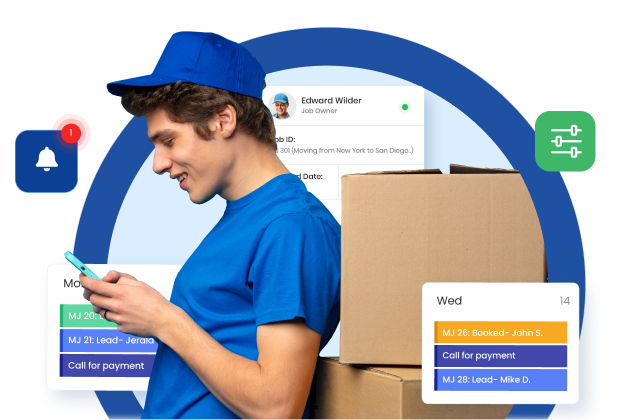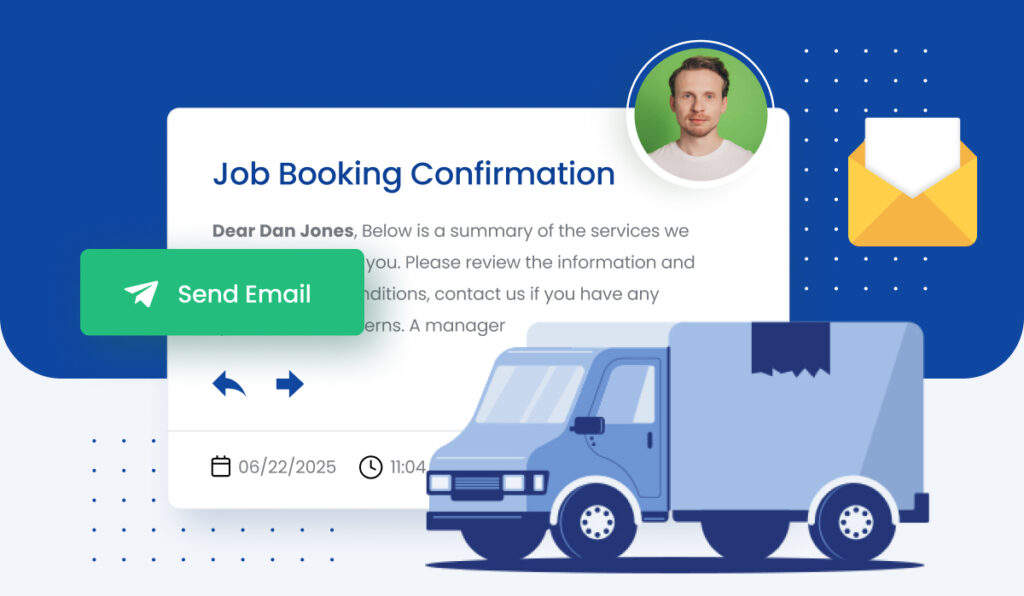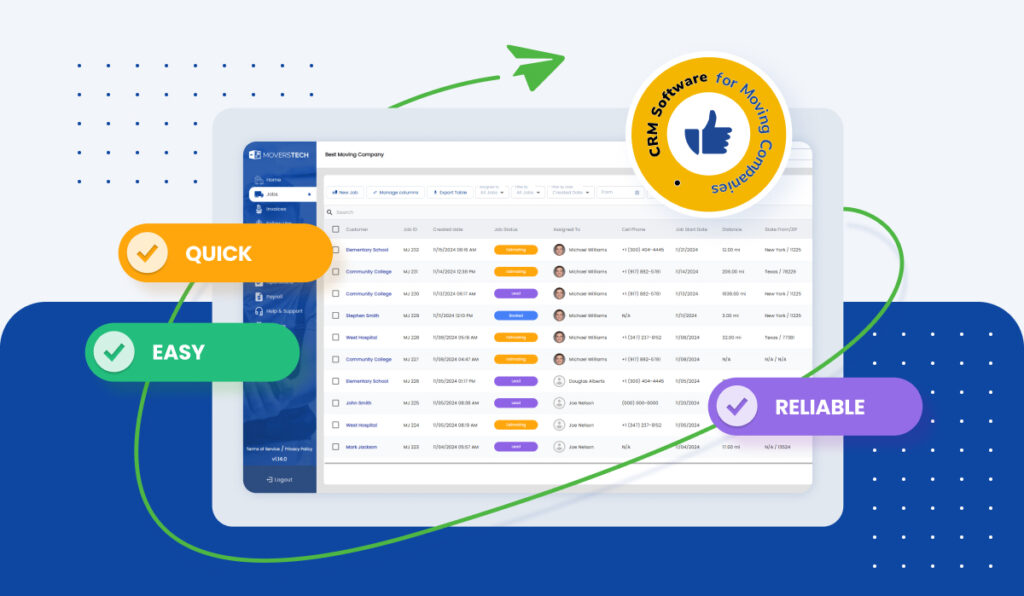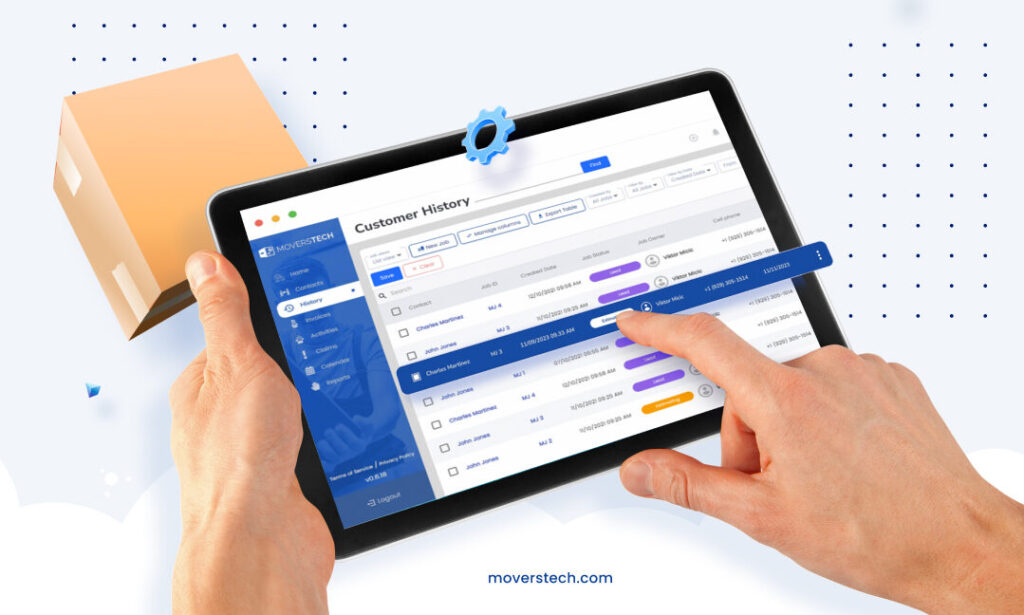The follow-up formula: when, what, and how to send it
Book Your Demo
A single unanswered estimate can easily become a lost job when there’s no follow-up. Many movers see good leads vanish simply because no one reached out again. With moving software, you can make sure every lead and customer hears from you at the right time without adding more tasks to your schedule. We will break down the follow-up formula, showing you when to follow up, what to say, and how to send it to turn more quotes into booked moves.
When to follow up (timing matters)
In moving, timing often decides whether a lead books or goes elsewhere. Too many movers wait too long to follow up or send reminders at the wrong time, letting opportunities slip away. The follow-up formula starts with knowing exactly when to reach out so every lead stays warm and engaged.
After you send an estimate, always follow up the same day with a thank-you message. Within 24 to 48 hours, send a friendly nudge to see if they have any questions or need more details. Before the move, schedule reminders three days ahead and again one day before to confirm details and avoid confusion. After the move, check in within two to three days to ensure everything went well. About a week later, ask for a review or referral while the experience is still fresh.

With CRM tools, you can automate these follow-ups and never miss a chance to connect. Triggers handle the timing for you, which makes the follow-up formula easy to repeat for every lead and customer.
What to say (tone and message templates)
Timing alone won’t close a lead if your message feels flat or robotic. The follow-up formula works best when your words sound natural, friendly, and focused on helping the customer.
For estimate follow-ups, a quick thank-you followed by a simple question keeps the conversation open. A message like “Thanks for considering us. Would you like me to go over any part of the quote?” works well. Before the move, reminders should be professional and supportive, including the date, arrival time, and a short checklist to help the client prepare. Post-move, always show gratitude. Thank the customer for choosing you, ask how their experience was, and include a polite note about leaving a review or sharing your name with friends.
To make this work, you should be familiar with the do’s and dont’s of follow-ups. Understanding what customers appreciate and what feels pushy helps you write messages that get replies and build trust.
How to send it (the best channels)
Even the best timing and message won’t work if you choose the wrong channel. Text messages are fast and usually get the quickest response. They are perfect for reminders or quick confirmations before moving day. Emails work better for detailed information, such as estimates or long updates that clients may want to revisit later. A phone call is best when a lead has gone quiet or when an issue needs personal attention.

Using your CRM makes this process much easier. You can text or email directly from CRM without switching between apps, which keeps your follow-up process smooth and consistent. Layering channels also works well. For example, send the estimate by email, then follow up with a short text a day later to check in. By applying the follow-up formula with the right channels, you stay in front of customers without overwhelming them. This will increase your chances of turning leads into booked moves.
Common mistakes to avoid
Many moving companies lose leads not because their service is poor, but because their follow-up strategy is inconsistent or off-putting. These are some mistakes you should avoid:
- Being too aggressive – Sending too many messages too close together can make customers feel pressured instead of supported.
- Forgetting to follow up – Without a structured process, many leads are left hanging and often go to competitors.
- Using generic messages – Copy-paste templates that sound robotic rarely get replies. Personalized messages get better results.
- Not tracking replies – Without a clear system, you risk sending follow-ups at the wrong time or missing important questions.
Automate your follow-ups with MoversTech
Following up consistently takes time, and many moving companies lose leads because they can’t keep up. The follow-up formula becomes much easier to apply when you let automation handle the heavy lifting.
With MoversTech, you can set rules, templates, and schedules once and let the system do the rest. Messages go out automatically based on triggers, like when an estimate is sent or a move is complete. This ensures no lead is ever forgotten and every customer gets timely updates.

Automation saves time, helps you stay organized, and keeps your communication consistent across the sales process. The benefits of automated follow-up systems go beyond convenience. They directly increase your chances of turning inquiries into confirmed bookings.
Because MoversTech integrates with dispatch, sales, and claims, you can manage everything in one place without losing track of conversations. This makes the follow-up formula easy to repeat for every lead, every time, without extra effort.
Get more moves with the proven follow-up formula
A well-timed message can make the difference between a lost lead and a confirmed booking. Many movers underestimate how much follow-ups impact their bottom line. The follow-up formula gives you a repeatable way to stay connected, build trust, and guide customers toward choosing your services. With smart automation and the right CRM tools, you can reach every lead at the right moment, say the right thing, and use the right channel without adding more to your workload. Consistent, helpful communication wins more jobs and strengthens your reputation with past clients, leading to reviews and referrals. Start applying the follow-up formula today and turn missed opportunities into steady, booked moves for your business.
Stay Informed
Subscribe for industry
news & updates
"*" indicates required fields
